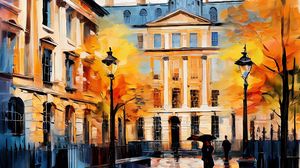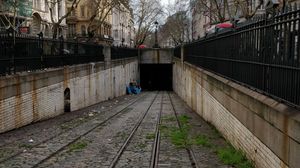
Bloomsbury Square is one of London's oldest garden squares, dating back to the early 18th century. Its creation marked a significant evolution in London's architectural landscape, offering a green respite amid the urban environment.
This historic square has connections to some of the most influential figures in British history, including Charles Dickens, who referenced the area in several of his works. Its literary heritage makes it a magnet for book lovers and history enthusiasts alike.
Interestingly, Bloomsbury Square has a reputation for being an intellectual hub, largely because it is situated near some of the most prestigious educational and cultural institutions in London, including the British Museum and the University of London.
The square is surrounded by a mixture of Georgian and Victorian architecture, including the impressive Southhampton House, which has housed many significant cultural and social institutions over the centuries.
In the 19th century, Bloomsbury became famous for the Bloomsbury Set, a group of influential writers, intellectuals, and artists. It's fascinating to think that the very air in Bloomsbury Square once echoed with the conversation of literary greats like Virginia Woolf and E.M. Forster.
An intriguing lesser-known fact is that during the early 20th century, Bloomsbury Square was part of a campaign to establish more public green spaces in London, promoting the importance of public access to gardens in urban areas. This early environmentalism resonates with today's concerns for public green spaces.
The central garden of Bloomsbury Square is open to the public and offers well-maintained paths and seating, providing a peaceful environment perfect for a casual stroll or a quiet moment of reflection amidst the city's hustle and bustle.

Making the Most of Your Visit:
Start your visit with a little walk around the perimeter of Bloomsbury Square. It's a great way to appreciate the blend of Georgian and Victorian architecture that frames the gardens. You'll notice some of the buildings still retain their historical plaques, giving you insights into the area's past residents and notable events.
If you're a fan of literature, take a little time to sit on one of the benches and dive into a book by a Bloomsbury Group author. Green spaces often inspire creativity, and doing so could give you a unique connection to the historical literary atmosphere of the square.
Look out for the statue of Charles James Fox standing confidently in the square. This is a favourite spot for history buffs to remember his political contributions and is a good photo opportunity to capture a piece of local history.
Visit during the weekdays, especially in the morning, if you want a quiet experience. Around this time, you'll mostly find locals walking their dogs or having tranquil moments before the city moves into full swing, allowing you to bask in the peace of this historical site.
Make sure to explore the small eco-friendly gardening spots created around the square. These patches celebrate its history in urban environmentalism, and exploring them is a lovely way to appreciate the ongoing efforts to keep London green and sustainable.

Visiting Times & Costs:
Bloomsbury Square is open to the public and accessible year-round, allowing both locals and tourists to enjoy its tranquil environment at any time.
Opening Times: The square is open daily from dawn until dusk, providing ample opportunity for visitors to explore at their leisure.
Cost: Entry to Bloomsbury Square is free of charge, allowing everyone to appreciate its historical and natural beauty without any cost.
Accessibility: The paths within Bloomsbury Square are fairly level and well-maintained, making it accessible for those using wheelchairs or with limited mobility. However, some areas may have uneven surfaces, so caution is advised.

Address & Map:

Nearby:























